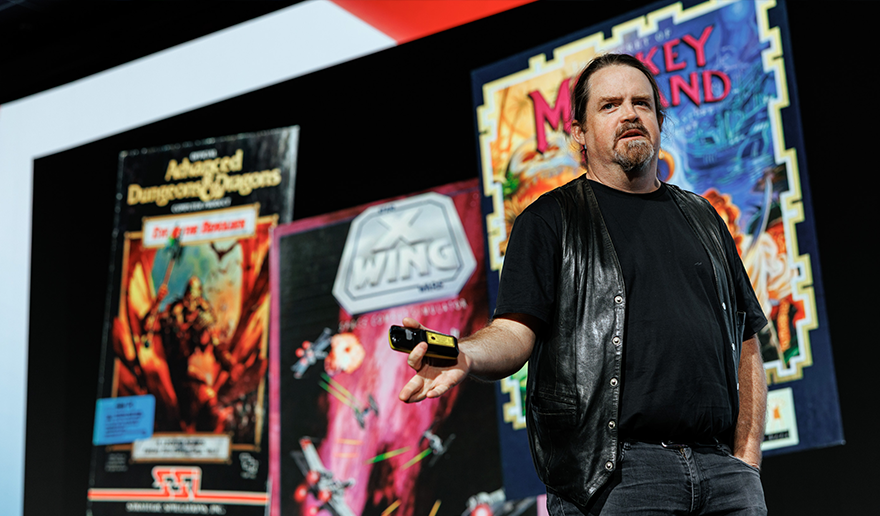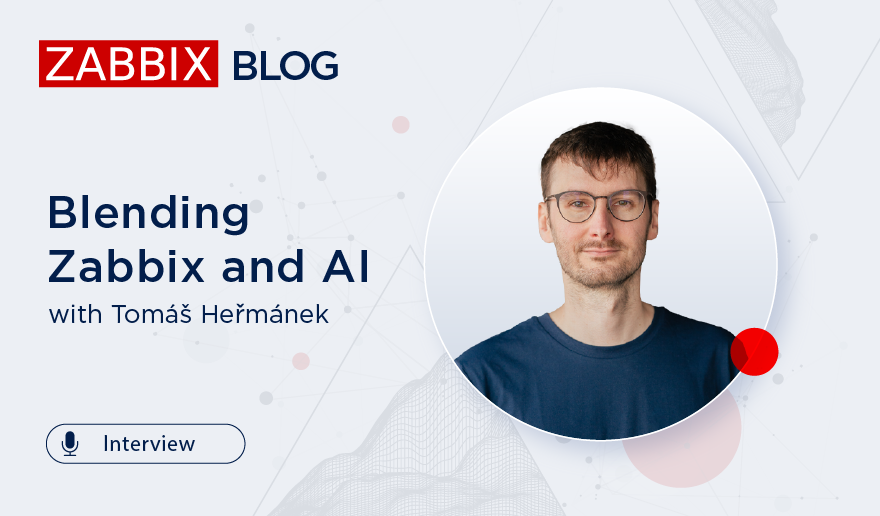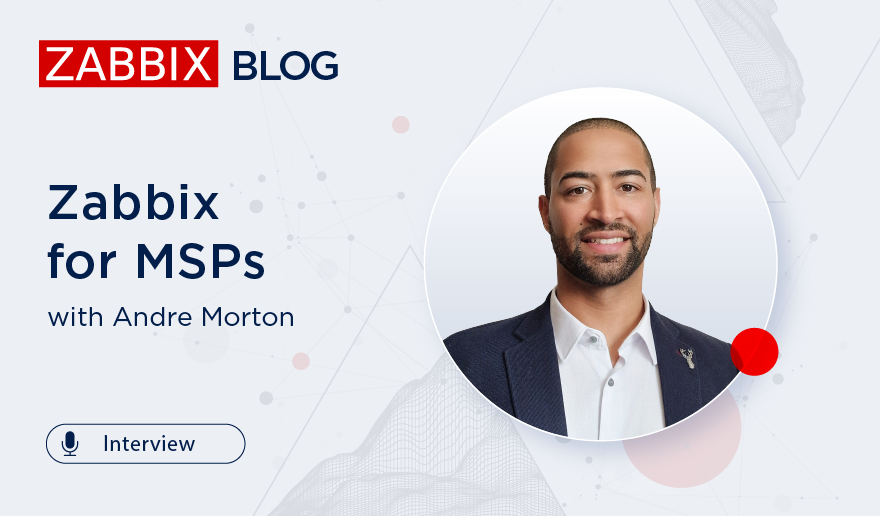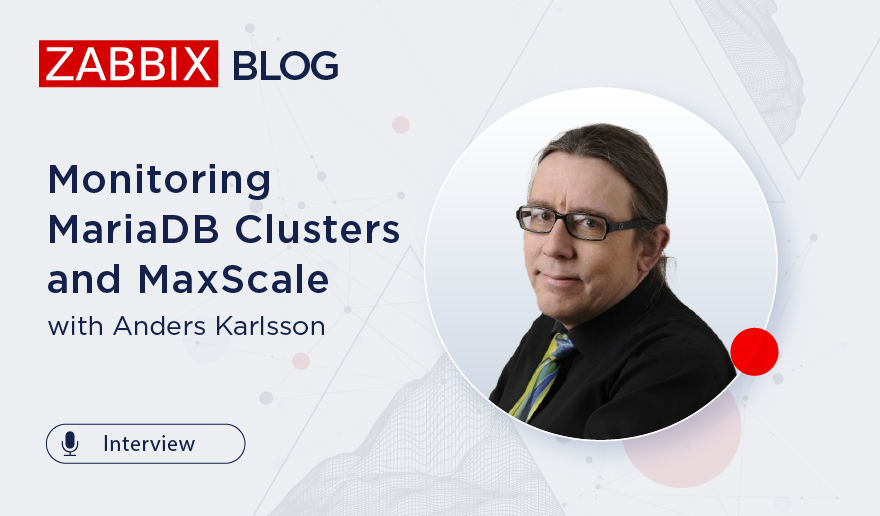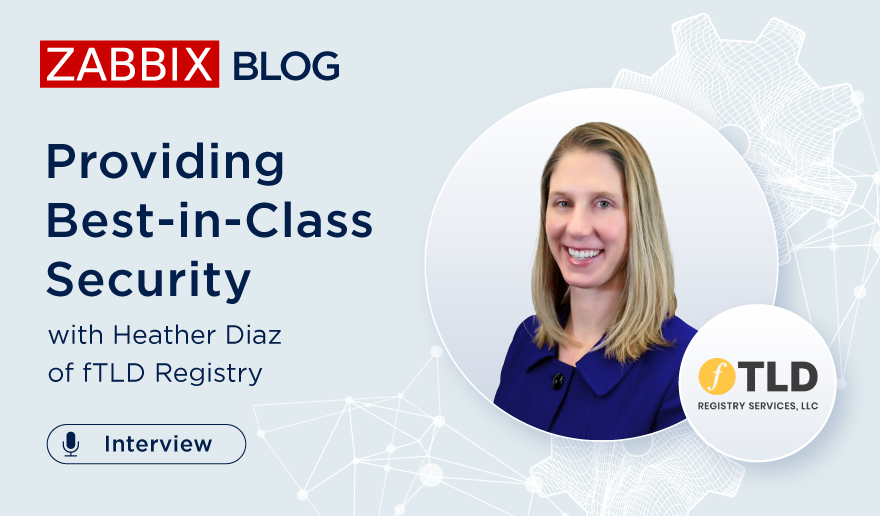Given self-isolation and no chance to get back to the latest news in person or at events and conventions, I decided to have a quick sit-down with the one and only Alexei Vladishev, the CEO and founder of Zabbix, to check how things are going, what we plan for the future, what the current situation in the company is, and so forth.
Alexei, welcome! Before we start our business discussions, tell me, how are you? The situation is a bit confusing for everyone, some people are under the weather. But I hope you’re doing fine.
Hi, everyone! Thank you for asking, I’m doing well. These days, I’m in a multitasking mode working from home and supervising three of my kids who are studying remotely. It is not easy sometimes.
Anyway, I think the remote-work experience will be very useful for us as a company in the future. I’m happy that we in Zabbix reacted superfast even before our government announced this special situation. We purchased laptops and let people work from home and use our new best friends — Zoom, Skype, and other messengers.
Alexei, a couple of weeks ago we celebrated the 15th anniversary of Zabbix, which is quite an achievement! Zabbix started as a personal project of yours, but in 2005 you decided to establish a company. When you planted this seed, what did you actually envision? How are we keeping up with your personal dream or vision for the company and the product?
Well, I couldn’t imagine what it will grow into. 15 years ago, I decided to establish a company around Zabbix – my open-source project, as an experiment. I guess, it was quite a risky decision.
Then there were literally no good examples of such businesses with Red Hat being the only exception. Even now most open-source companies just follow the open-core business model developing proprietary solutions. So, Zabbix is a unique example of a successfully growing bootstrap business built around open-source software.
For me, these 15 years delivered the steep learning curve as a typical sysadmin has transformed into someone in charge of the company. This experience was really exciting.
If we look at this entire journey, how things have changed not just for you, but also for the team and the community? Was there ever a point where you saw the big picture and thought that this was escalating and growing far more faster than you had ever anticipated?
No, I could have never guessed that Zabbix would go so far. Zabbix is an example of an organically growing bootstrap as the product had been launched four years before the company was established.
Nowadays, it’s the Zabbix team contribution that opens the door to improvement and fast development of a better product.
Our team is located in four offices: Riga, Tokyo, Moscow, and New York, which brings us closer to our users and customers and allows us to understand specific requirements of different markets with different needs.
Our partners also add value by delivering Zabbix software, services, and product knowledge to end-users in their language in nearly all countries around the world.
Zabbix as open-source software is obviously nothing without the community. I believe that Zabbix community is the friendliest one and ready to help even to Zabbix newbies.
Alexei, we’ve talked about history, and we’ve scratched the surface of the current situation. Let’s talk about the immediate future. Fairly soon we are to release Zabbix 5.0. What are the coolest features you are most excited about that will benefit our users and customers?
I think this question should be addressed to Zabbix users. It’s not easy to choose a specific feature as we have more than 70 enhancements and new features, valuable to different users with various monitoring priorities. For example, enterprise users will enjoy built-in support of single sign-on thanks to SAML authentication in Zabbix 5.0, and enhanced monitoring of large-scale environments.
We have introduced many security-related features including support of macros to keep secrets as password authentication tokens and keys important for cloud monitoring and monitoring of critical environments. A number of performance-related improvements will allow Zabbix to deal with the media of monitored devices.
I believe all users will enjoy a large set of ready-to-use integrations with alerting or ITSM systems, including Jira, PagerDuty, ServiceNow, VictorOps, Slack, Microsoft Teams, and many others.
The set of already-in-use and new features, which will be introduced in Zabbix 5.0, combined with the front-end improvements in automation and discovery, including solutions or templates for monitoring of specific devices or services, will deliver a comprehensive monitoring platform for many use cases and scenarios.
Zabbix 5.0 is around the corner, stay tuned as it will be announced very soon!
Our users can keep track of new features on our website, check out release notes for every minor update or the roadmap. But not many users actually know how the roadmap is established., What is the process behind you or the development team deciding on what you want to see in the next version or what will benefit our users the most? How do you take all those features and all your personal desires and vision and incorporate them into a solid and stable release?
It is a very good question. At the outset, Zabbix was a solution to my problems and challenges. Now Zabbix is used by tens of thousands of users with different requirements and expectations. So, suddenly a roadmap is not an easy task anymore as it defines the future of the product.
Zabbix roadmap is composed basically of a few blocks of different feature requests, such as:
- Technical debt or refactoring needed to continue development;
- Strategic features that define the future of our product;
- Sponsored development when our customers and users pay for improvements of certain Zabbix features; and
- Bug reports.
I guess the main trick, in a nutshell, is a good balance between different stakeholders’ wishes. For example, if you neglect bug reports, the existing users will suffer from some drawbacks. If you decide to focus on sponsored development only, at the very end you will have a product that is specific to some groups or customers.
I see the roadmap as a very long list of development priorities. We have hundreds of top priorities, but it’s difficult to forecast, which one will be implemented in Zabbix 5.2 or is planned for Zabbix 5.4.
In addition, the current situation and the market change quite rapidly. A functionality we thought important one year ago might not be on our priority list one year later. Therefore, the roadmap is a dynamic list of priorities, which may change any time depending on strategic decisions and market situation.
Zabbix development process is well-defined, strict, and standardized. Development always starts with RFP, a.k.a ACC (Acceptance Specification Document), which contains acceptance criteria and reasons for developing a specific feature.
The ACC document is reviewed and then submitted to the development team. The development team creates specifications clarifying implementation details and containing technical information on how this particular feature or functionality should be implemented, tested, and documented. Then after the code is reviewed, and the feature is tested by the development team and QA team, and documented, the feature is considered finished.
The main goal of the whole process is to ensure the quality of the product and create a solid framework for our development team. I believe, our development process now produces great results.
Alexei, you mentioned two things that I cannot ignore. You said that it’s very important and very difficult to provide a specific response whether a particular feature would be implemented in a certain release. So, without specifically focusing on any release, what can we look forward to in the future? Is there a particular piece of technology that you are excited about?
Creating a universal monitoring solution is not easy since we have to deal with and support many technologies and different use cases of our end users.
I’m very excited about applying some machine learning techniques helping to manage large-scale monitoring and provide insight to DevOps and infrastructure teams.
Now we are also actively working on cloud monitoring. Zabbix is already available in different public clouds, like AWS, Azure, or GCP, though it still lacks ready-to-use solutions to monitor cloud technologies.
In addition, I look forward to making Zabbix a cloud-native application, with built-in high availability redundancy and ability to scale on demand.
I guess these are the major news that you may expect to see in Zabbix very soon.
Thank you very much for that, Alexei. Before we round up let’s talk about you a bit more. Sure, you are excited to see the product development and the company, as well as our community, grow. But what is the dream that you strive for?
Right now, I miss direct face-to-face communication with my colleagues and Zabbix users. Though COVID hasn’t gravely affected our operations, I do hope that it will be over soon, and we will be back to normal life. I guess that’s the only and the most important thing I’m dreaming of right now.
Thank you, Alexei!
We had Alexei Vladishev, the CEO and the founder of Zabbix, sharing insights about Zabbix.
We hope you all stay safe and healthy. Hopefully, soon we will see you at Zabbix conventions or Zabbix Meetups. Thank you all very much.







 Prev Post
Prev Post 
